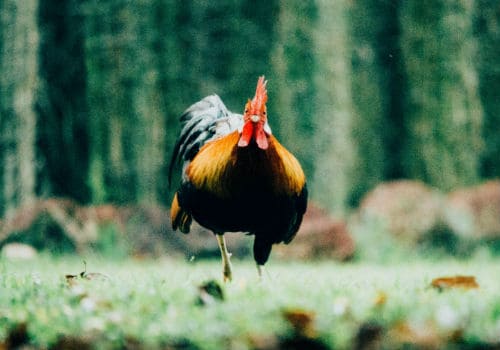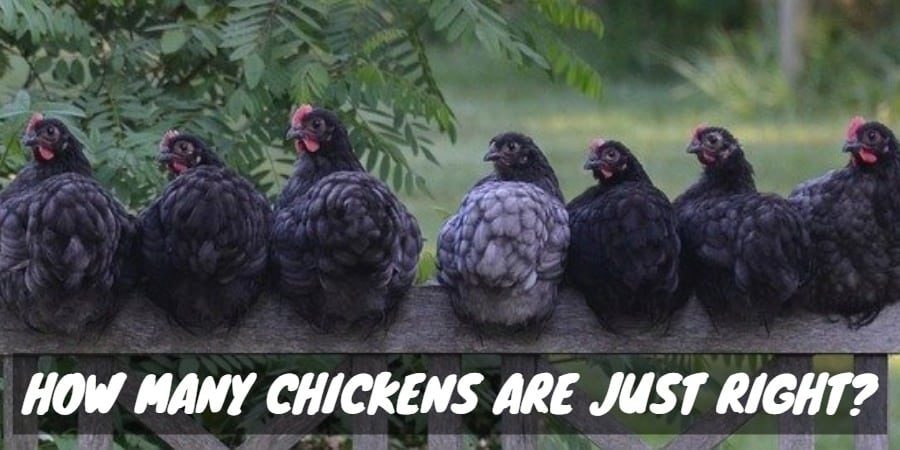Chickens are interesting birds who are full of surprises. We’ve compiled a listing of interesting facts about chickens, some of which are quite startling.
Table of Contents
show
Random Chicken Facts
- Chickens are descendants of dinosaurs and are the closest living relatives to the Tyrannosaurus Rex.
- Chickens experience rapid eye movement (REM) sleep and dream in color as humans do.
- There are more than 25 billion chickens are in the world, making them more plentiful than humans by a factor of almost 4.
- In 2004, the chicken was the first bird to have its genome sequenced.
- Hens can lay over 300 eggs per year.
When people are afraid of chickens, the phobia is called alektorophobia.
- Over half a billion hens are used for egg production in the world.
- In 2009, the U.S. Department of Agriculture estimated that over 90 billion eggs are produced in the United States alone.
- Chickens lay eggs at 105 degrees Fahrenheit (or 40 degrees Celcius).
- Chickens have been farmed by humans for over 8,000 years.
- Americans eat over 8 billion chickens per year.
- Americans eat more chicken per year than they do meat from cows.
- Chickens are omnivores, meaning they eat both meat and plants.
- Chickens can taste salt but not sugar, but they avoid both.
- Per pound, Australians eat on average per year more chicken than Americans – 205 lbs. to 201 lbs., making it the country that consumes the most chicken per capita.
- Chickens lose feathers when they’re stressed, in much the same way we lose hair when we’re stressed!
- In South Korea alone, there are more chicken restaurants than there are McDonald’s in the entire world!
- Over 50 billion chickens are born every year!
A chicken’s heart rate can be over 350 beats per minute!
- Chickenpox has nothing to do with the chicken.
- Chickens can live without a head for a long time; check out Mike The Headless Chicken, who lived for 18 months without a head!
- A chicken can run at speeds up to 9 mph. A headless chicken can run the length of a football field before dropping dead as long as there is no damage to the brain stem!

- Mother hens turn their eggs roughly 50 times per day to prevent the yolk from sticking to the shell.
- Chickens live together as a flock and have a communal approach to the incubation of eggs and raising of their young.
- Chickens with red earlobes lay brown eggs and those with white earlobes lay white eggs.
- Chickens form complex social structures known as “pecking orders” and every chicken knows his or her place on the social ladder.
- The chicken is an extremely clean animal in its natural environment and preens its feathers every day.
- A baby chick’s life starts in a fertilized egg, which the mother hen sits on for 21 days.

- The egg yolk (the yellow) has all the food the chick needs while it grows inside the egg. The egg white supplies the chick with water.
- Chicks hatch by pecking a hole in their shell with a bump using its beak, which is called an egg tooth. The egg tooth falls off a few days letter.
- Female chicks are called pullets. Male chicks are called cockerels.
- Baby chicks grow fast. By 20 weeks (5 months) they will be hens or roosters.
- Chickens can kill a snake!
- Chickens can recognize each other.
- Hens are great mothers. They are brave and protective of their young.

- Chickens can do math! A study showed that chicks can add and subtract using numbers smaller than five.
- Chickens learn from each other!
- 97 chickens are killed every 0.05 seconds!
- The world record for egg yolks in one egg is 9 yolks.
- Chickens were domesticated around 8,000 years ago in Southern China.
- As chickens become older, they lay bigger eggs.
- Mother-hens teach their chicks what to eat and what to avoid.
- Chickens were initially domesticated for cockfighting.
Chicken Nutrition Facts
The average chicken breast has approximately 300 calories, 50 grams of protein, and 6 grams of fat. It’s a low-fat source of protein that contains no carbohydrates.





You help me finish my chicken book